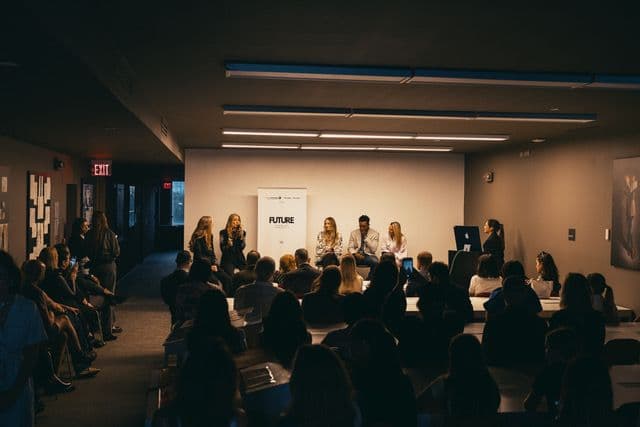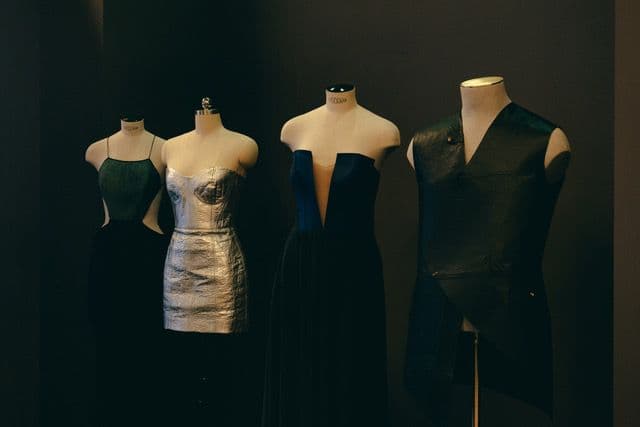Can you share the process and challenges of creating dresses made from unconventional materials like seaweed, pineapple, and kombucha SCOBY?
That is a very interesting question, and you are right; there are definitely challenges. These materials are not only very new but also entirely different from well-known materials like leather or cotton. So, the challenge for a creative is to see this as an opportunity to work with these unconventional materials and help shape the way forward.
For example, we had one beautiful dress made from Kombucha waste by the talented RiinaO that started to biodegrade. At first, we were very reluctant to show it, but then we decided to do so anyway, and it became part of the dress's story. Everyone truly appreciated it as a real compostable wearable garment. You have to be open and work with the tendencies of the material, rather than fight against them.
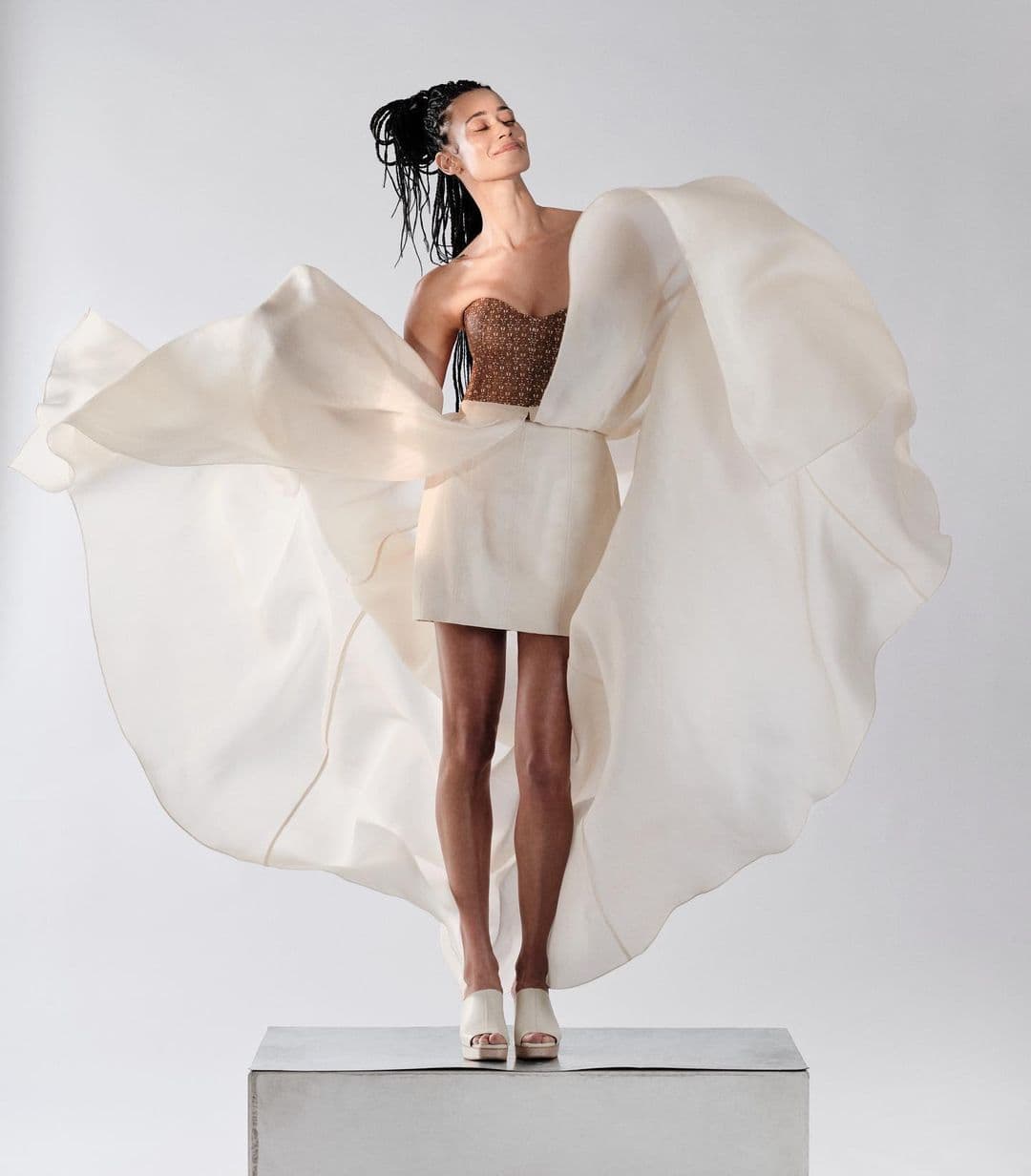
What role does storytelling play in your design process, and how do you weave it into each 'Ecouture' creation?
It is all about storytelling, as we truly believe in the importance of conveying the journey of the material or dress, where it comes from, and who is involved in the process. Many of the materials we use are not yet available commercially.
Through our speculative designs, we aim to educate and showcase what the future of fashion could look like, all while keeping people and the planet as a priority. With our initiative, Future Fashion Concepts (FFC), we aim to advance this idea by bringing the next generation of designers together with material developers and educational institutions.
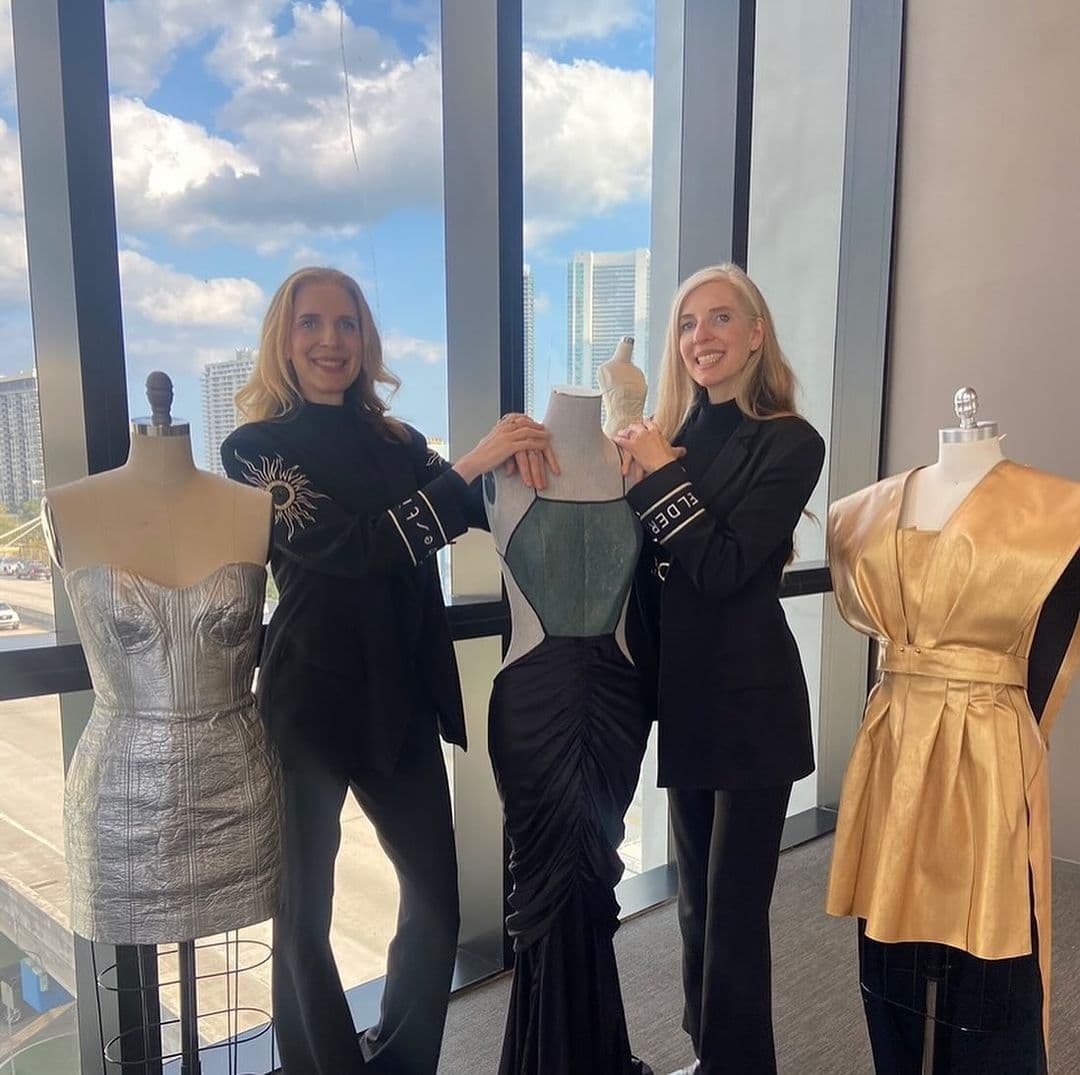
What are some of the most innovative sustainable textiles you've worked with, and how do they compare to traditional materials?
That is a tough one, as all the materials we've worked with are so different and at various stages of development. They are all unique, and we love discovering and collaborating with each other. From luxurious vegan silk made from citrus industry by-products by Orange Fiber to entirely new materials like Mycelium-based Forager by Ecovative, each one has innovation and sustainability at its core, and that’s what drives us.

How do you think celebrity endorsements influence public perception and adoption of sustainable fashion?
We think it is wonderful when celebrities use their voice to share their values and strive to promote responsible design like this.
We truly hope this may influence the public’s perception, but what we have found is that the educational aspect is just as important and perhaps has even more of an impact, especially when combined with showcasing beautiful innovations, as we aim to do at our Future Fashion Concepts exhibitions.
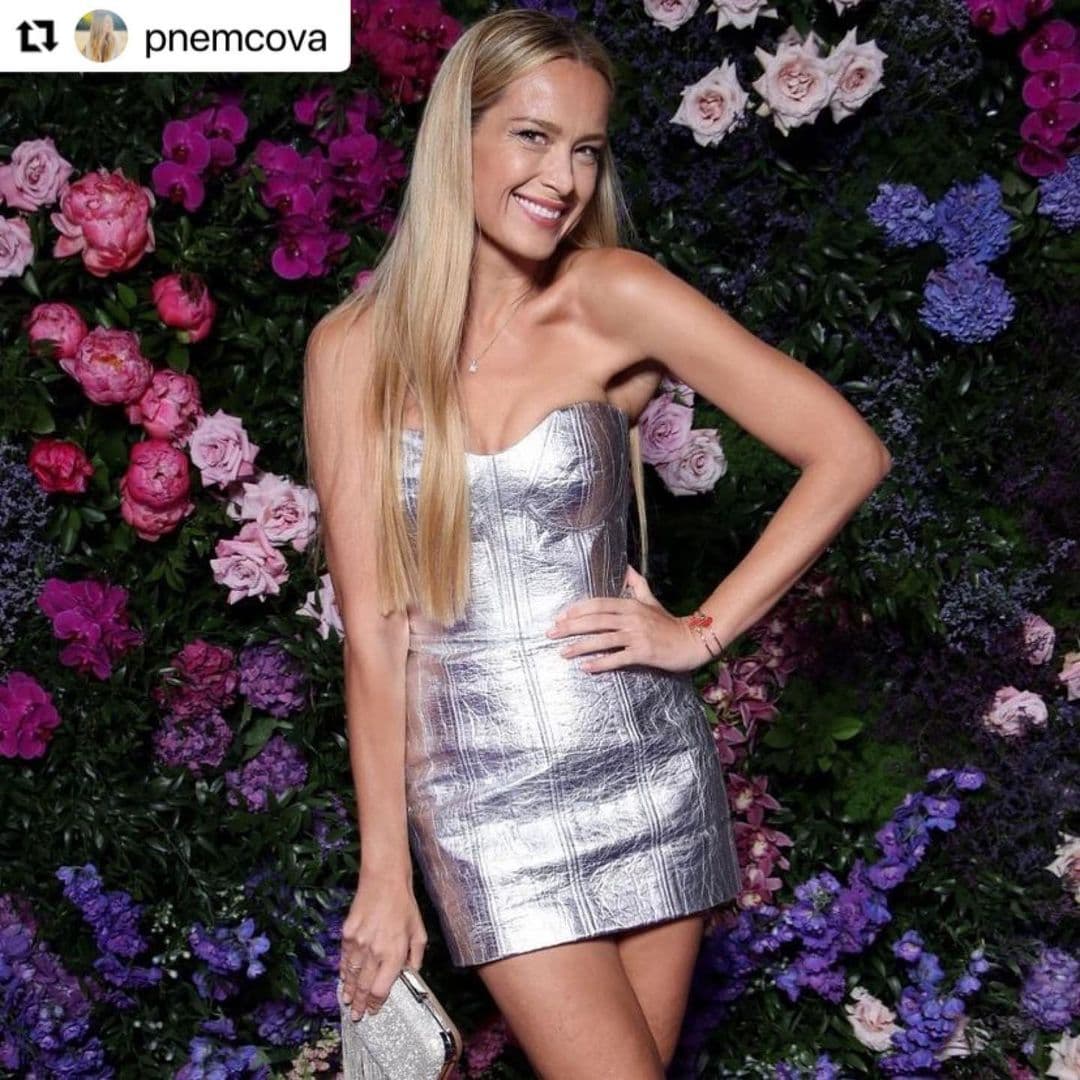
What are the key elements that make a successful partnership with eco-conscious brands like ECOALF and Plant The Future?
The most important element is that your values are aligned and that you want to convey the same message. We have been very lucky that, when this was the case, our partners trusted us, gave us creative freedom, and let us do our thing.
This way, new developments happen, and beautiful partnerships can flourish. For example, with our Ecoalf collaboration, we won the PETA Award for Best Collaboration, which meant a lot to us.

What are the environmental benefits of using materials like Mirum and organic peace silk in your designs, compared to traditional textiles?
I think it is important to understand that any creation has an impact on our environment. So it is more a question of how we can reduce our impact while creating, and use as few new resources as possible at the same time. Working with waste or by-products from other industries is a beautiful way to reduce our footprint while innovating, as Mirum does by including agricultural waste in its material developments, and Orange Fiber with citrus waste.
If you are using new resources, it is crucial to consider how to minimise the impact on the environment, which is often overlooked in traditional material development. Many factors come into play, such as using regenerative farming, avoiding harmful chemicals like pesticides, ensuring fair treatment and pay for farmers and workers, and more.

How do you achieve the desired textures and finishes on garments made from innovative materials like cork on French linen or wood pulp?
Often, we have to work with whatever the developers have available because they frequently don’t have the capacity to create custom textures or designs. This will change over time, for sure. If we have the chance to create bespoke designs, like with the gold-coloured Mirum fabric they made exclusively for us, it becomes a truly collaborative effort to achieve the gold marble effect we wanted.
Working directly with the scientists creating materials is such an honour, and it was astonishing to see how quickly Mirum managed to achieve the look. There is so much potential for these next-gen materials that is yet to be explored.

How do you tackle the issue of scalability when producing custom materials like laser-cut kombucha SCOBY latex for larger collections?
As we moved away from designing seasonal collections, this is not so much of an issue for us. However, generally speaking, I think it is important to have clear communication between all stakeholders and to understand the realistic expected outcome to avoid disappointment later on.
There are many beautiful opportunities to shift the narrative to a more holistic one, such as with limited edition collections.
How do you hope to inspire the next generation of designers and consumers to prioritise sustainability in fashion?
That is our core hope: to inspire the next generation of designers by including them in creating designs that truly showcase responsible fashion in a new light.
We can only get the next generation of creatives on board if they are excited about working with these new materials and embracing a new way of thinking and working. The traditional fashion system is very outdated, and with all the incredible innovations from materials to technology, the future of fashion has a chance to make a difference for the better.
